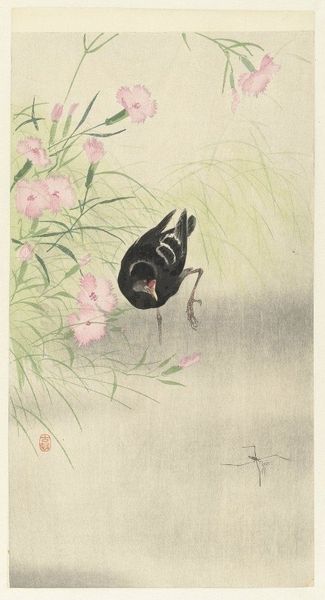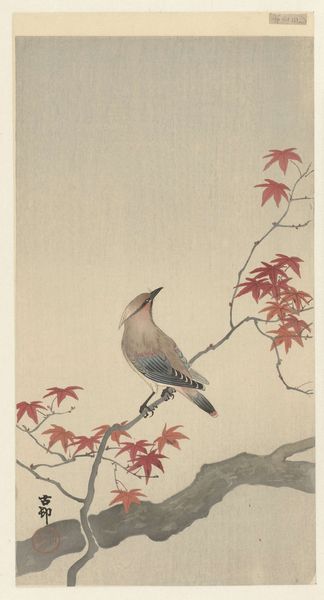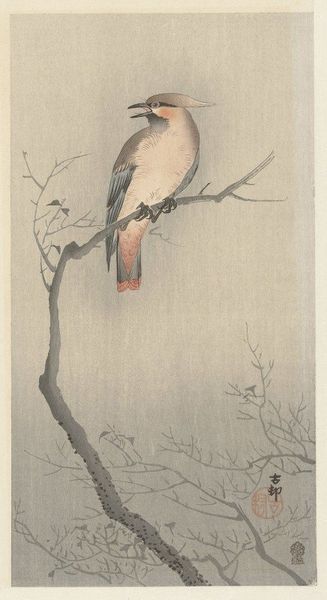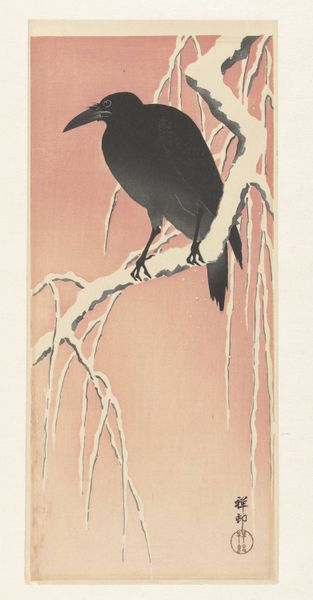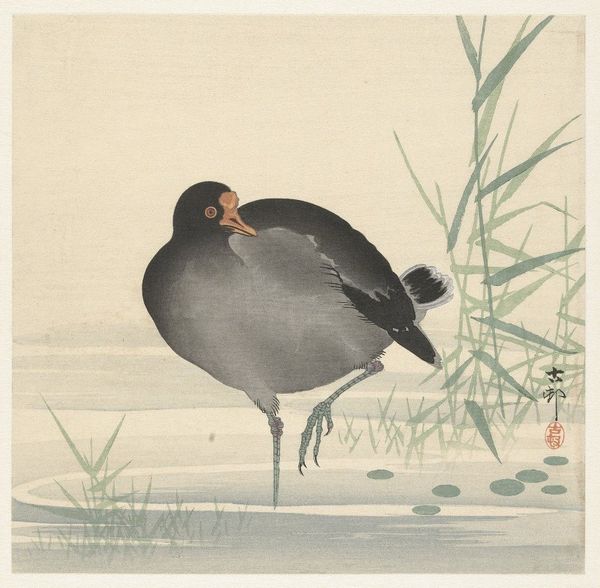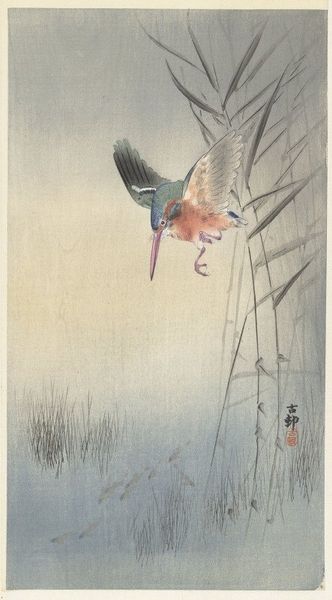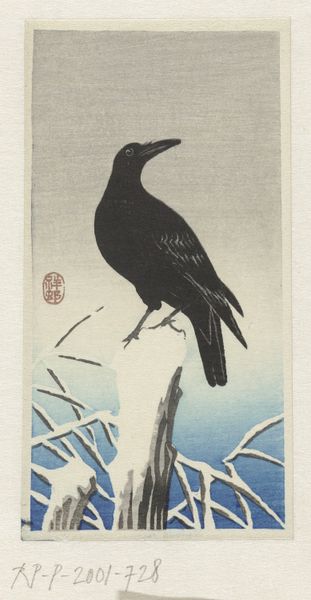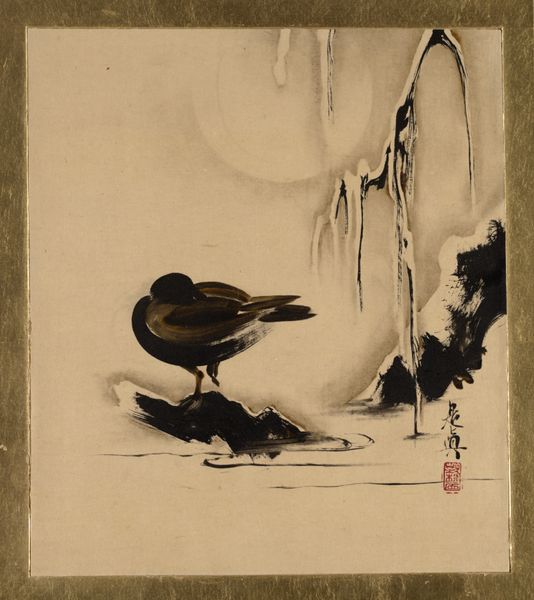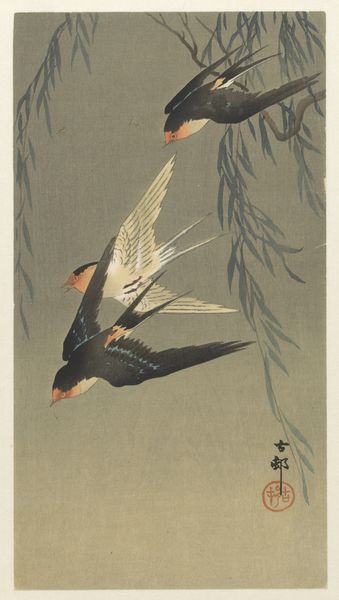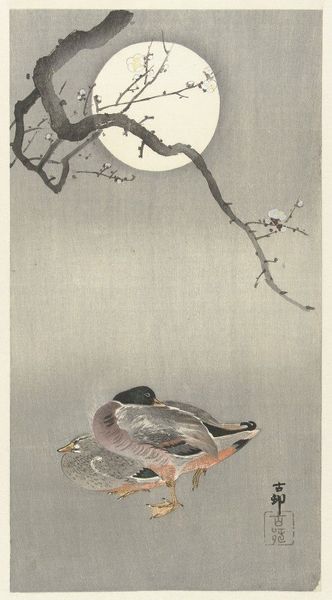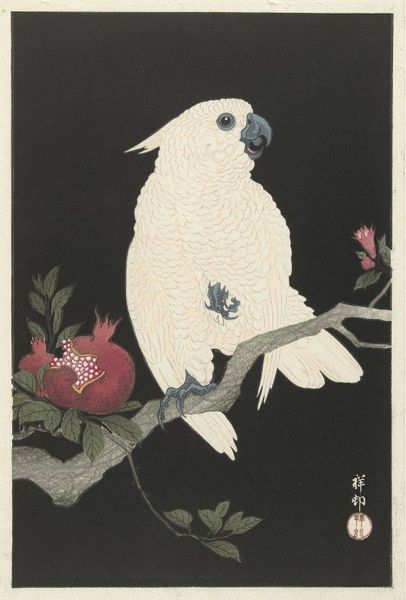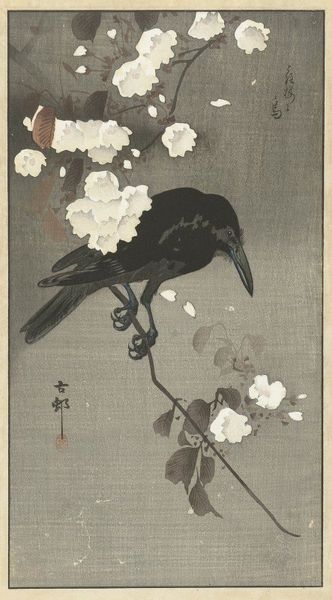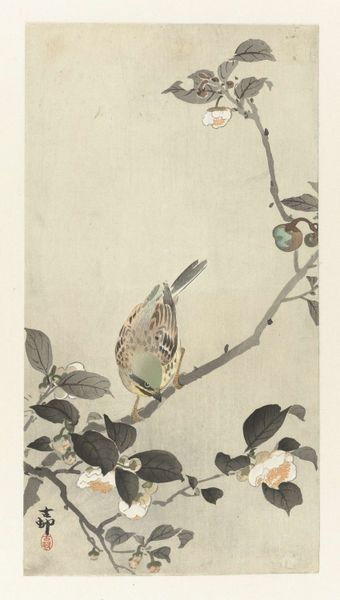
Dimensions: height 345 mm, width 187 mm
Copyright: Rijks Museum: Open Domain
Editor: So, here we have "Waterhoen," a woodblock print by Ohara Koson, dating sometime between 1900 and 1936. The whole image is just so soft and tranquil, almost like looking through a misty window. I'm curious, what initially captures your attention about this piece? Curator: Well, for me, it’s that perfect tension between the delicate and the deliberate. Koson really had a knack for distilling nature to its poetic essence, didn't he? He was working during this fascinating moment, adapting traditional Ukiyo-e techniques to Western tastes, and I wonder if this piece strikes you as particularly Japanese, or does it bridge cultures somehow? Editor: I think it's that softness; the hazy background feels very Japanese, yet the realism of the bird seems almost Western. It's that blend, right? Curator: Precisely! Look at the detail in the bird’s plumage versus the almost abstract quality of the reeds in the background. He's playing with foreground and background in a really dynamic way. It’s not just a picture of a bird, it’s a study of atmosphere, a quiet haiku rendered in ink and wood. What does the composition evoke for you? Editor: It feels very balanced, even with the bird being off-center. Almost as if the negative space has as much to say as the actual subject. Curator: Absolutely. And don't you think that negative space almost encourages contemplation? As if the scene is much larger than the edges of the print? It reminds me how stillness in nature can speak volumes, what about you? Editor: Definitely! This image really shows stillness that allows the space to feel larger and connect. Curator: It seems Ohara Koson made an attempt at that in this painting and, ultimately, showed that the delicate art could bring us inner peace.
Comments
No comments
Be the first to comment and join the conversation on the ultimate creative platform.
